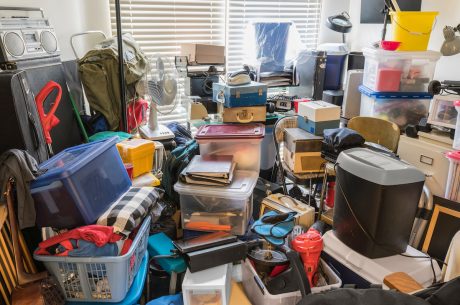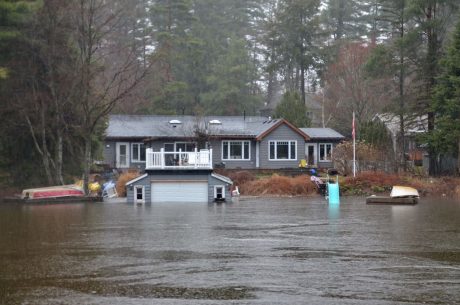When your business faces the daunting task of dealing with water damage, knowing what to expect can ease the stress and help you plan effectively. Water damage can be an overwhelming situation, disrupting operations and causing significant financial strain. An understanding of the restoration timeline can be a crucial asset in reducing anxiety and allowing for more strategic planning.
The timeline for commercial water damage restoration varies based on multiple factors, but understanding the typical process can help you prepare for the journey ahead. By having a clear timeline, business owners can make informed decisions, allocate resources wisely, and set realistic expectations for recovery.
Factors Influencing Restoration Time
Extent of the Damage
The severity of the water damage is the primary factor determining how long restoration will take. Minor leaks may require only a few days of work, while extensive flooding could take several weeks to fully address. Beyond the immediate physical destruction, extensive damage can also lead to more complex issues such as compromised structural integrity and electrical hazards, which necessitate more time-intensive repairs.
Type of Water Involved
There are three types of water that can cause damage: clean water, gray water, and black water. Clean water is from sources like broken pipes or rainwater. Gray water includes slightly contaminated water, such as from washing machines. Black water, the most hazardous, includes sewage and floodwaters. Restoration from black water damage is more complex and time-consuming. Handling black water requires specialized safety measures and thorough decontamination to ensure the area is safe for occupancy again.
The type of water not only affects the complexity but also the cost of restoration, with black water incidents often necessitating more expensive treatments and disposal methods.
Response Time
The sooner the water damage is addressed, the quicker the restoration process. Immediate action helps prevent secondary damage, such as mold growth, which can prolong the timeline significantly. Mold can begin to develop within 24 to 48 hours in damp conditions, leading to potential health risks and added cleanup costs. Timely intervention can also mitigate the risk of structural weaknesses and save salvageable materials, ultimately reducing the overall restoration timeline and expense.
Size of the Affected Area
Larger areas affected by water damage naturally require more time to restore. A small office may be back to normal within a week, while a large commercial building might take several weeks or even months. The size of the affected area impacts not only the duration but also the logistics of the restoration process, including the need for more equipment and manpower.
Necessary Repairs
If the water has damaged structural elements, such as walls, floors, or the foundation, the restoration process will take longer. Additional repairs, like electrical or plumbing work, can also extend the timeline. Structural damage may require detailed inspections and permits before restoration can proceed, adding to the complexity and duration of the project.
Typical Water Damage Restoration Timeline

Initial Assessment and Water Removal (1-3 Days)
The first step in water damage restoration is assessing the damage. Professionals will inspect the property, identify the water source, and determine the extent of the damage. Once the assessment is complete, they will begin water extraction using pumps and vacuums to remove standing water. This phase is critical as it sets the foundation for all subsequent restoration activities, ensuring that the right strategies are employed.
Quick and efficient water removal can prevent further damage, such as warping of wooden structures or saturation of wall cavities, which could harbor mold.
Drying and Dehumidification (3-7 Days)
After water removal, the next phase is drying and dehumidification. Specialized equipment, such as air movers and dehumidifiers, is used to dry out affected areas thoroughly. This step is crucial to prevent mold growth and further damage.
The drying process must be monitored closely, with humidity and moisture levels checked regularly to ensure that the environment is returning to safe levels.
It’s also important to reach hidden pockets of moisture in walls or under floors, as these areas can become breeding grounds for mold if not properly addressed.
Cleaning and Sanitizing (1-2 Days)
Once the area is dry, cleaning and sanitizing are essential. This step involves cleaning walls, floors, and personal items damaged by water. Special treatments may be necessary to eliminate odors and contaminants, especially if black water was involved.
The cleaning process often includes the use of antimicrobial treatments to prevent mold and bacterial growth, ensuring the space is hygienic and safe for reoccupation. Depending on the extent of contamination, this phase may also involve the disposal of irreparably damaged items or the use of specialized deodorizers to remove persistent odors.
Restoration and Repairs (Several Days to Weeks)
Finally, the restoration process begins. This step can range from minor repairs, such as replacing drywall and carpet, to major reconstruction, like rebuilding entire rooms. The time required for this phase depends heavily on the damage’s severity and the types of repairs needed. It may involve coordination with various tradespeople, such as carpenters, electricians, and plumbers, each contributing to the overall recovery effort.
Restoration aims not only to return the property to its pre-damage condition but also to enhance its resilience against future incidents, potentially incorporating upgrades or improvements.
Tips for Speeding Up the Restoration Process

Hire Professionals
Engaging experienced water damage restoration professionals is crucial. They have the knowledge, equipment, and manpower to manage the restoration process efficiently and safely. Professionals can accurately assess the situation, create a thorough action plan, and execute it with precision, minimizing downtime and disruption. Their expertise also ensures compliance with health and safety standards, reducing risks associated with improper handling of water damage.
Act Quickly
The faster you respond to water damage, the sooner the restoration can be completed. Quick action minimizes secondary damage and reduces the overall timeline. Establishing an emergency response plan can greatly improve reaction times, providing clear guidance on who to contact and what immediate steps to take. Early intervention not only protects the physical premises but also helps preserve business operations by mitigating potential losses.
Ensure Proper Ventilation
Good airflow aids in the drying process. Keep windows open if weather permits, and use fans to circulate air in the affected areas. Proper ventilation helps to accelerate evaporation, reducing moisture levels more quickly and preventing the onset of mold. In addition to natural ventilation, strategically placed industrial fans and dehumidifiers can significantly enhance the efficiency of the drying process.
Monitor Progress
Stay in touch with your restoration team and monitor their progress. Regular updates will help you understand what’s happening and when you can expect the restoration to be complete. Monitoring progress allows you to address any issues promptly and make informed decisions about adjustments to the restoration plan if necessary. Transparency and communication with your restoration team ensure that expectations are aligned and any unforeseen challenges are tackled collaboratively.
Conclusion
The timeline for commercial water damage restoration depends on several factors, including the severity of the damage, the type of water involved, and the size of the property. Understanding these elements helps business owners manage expectations and stay prepared throughout the restoration process.
If your business has experienced water damage, contact our team at PuroClean Water/Mold/Fire Damage Experts in Pineville, NC. We respond quickly, work efficiently, and restore your property with minimal disruption. Let us help your business recover with confidence and care.



 PuroClean Water/Mold/Fire Damage Experts
PuroClean Water/Mold/Fire Damage Experts